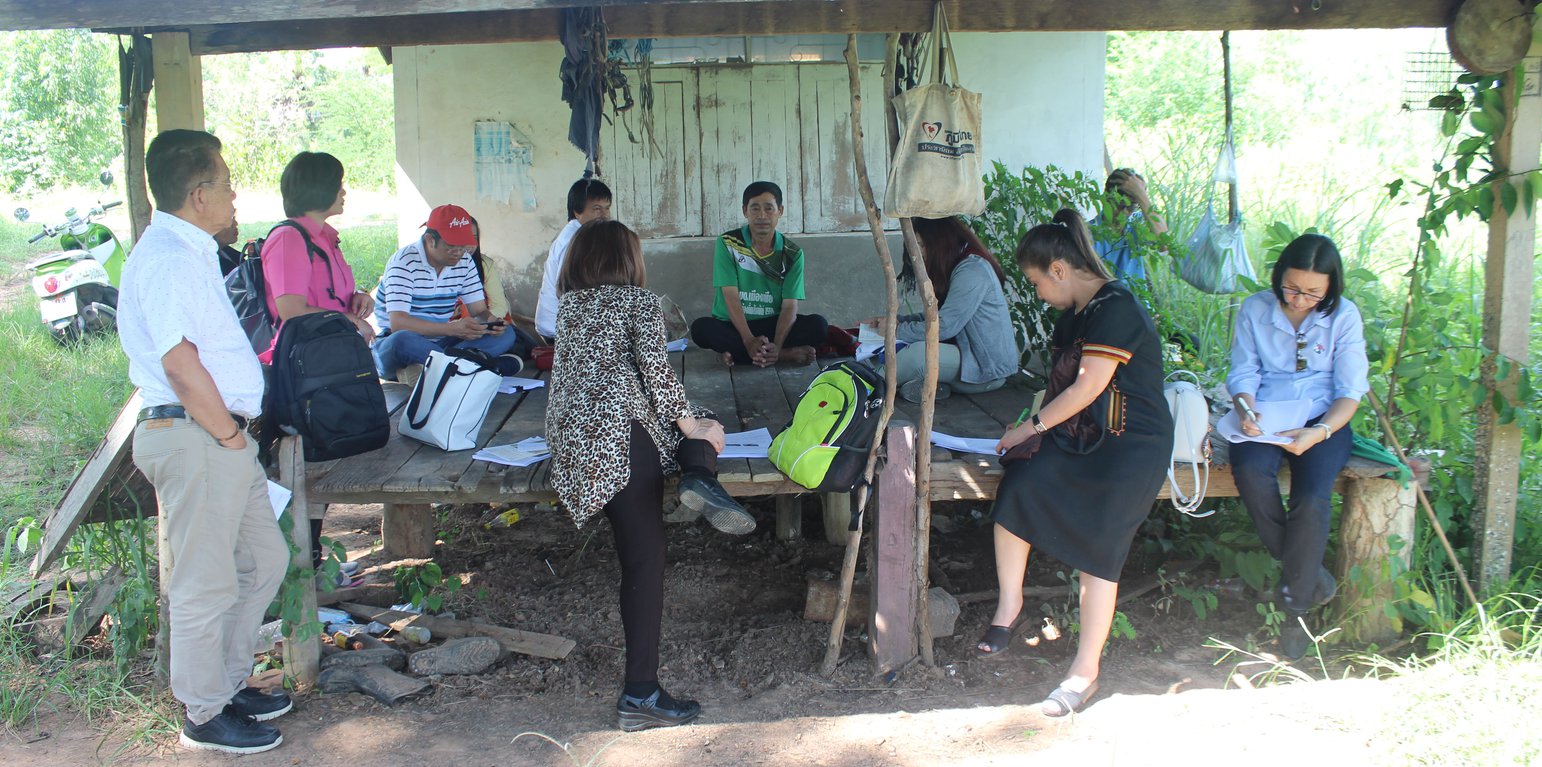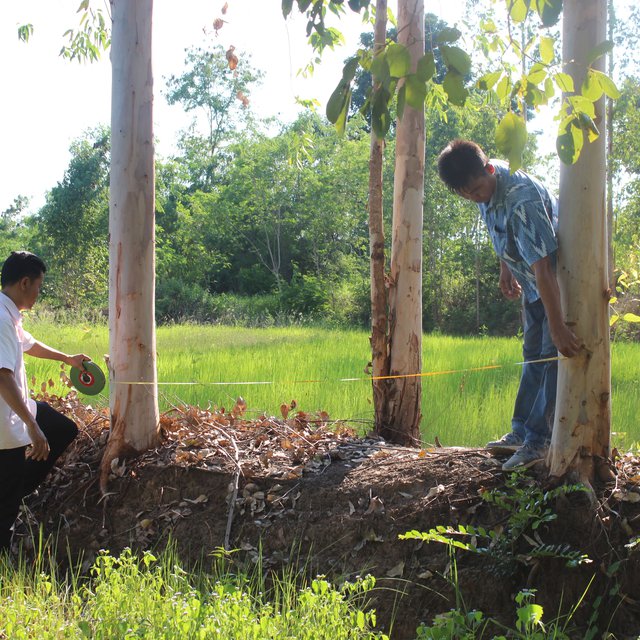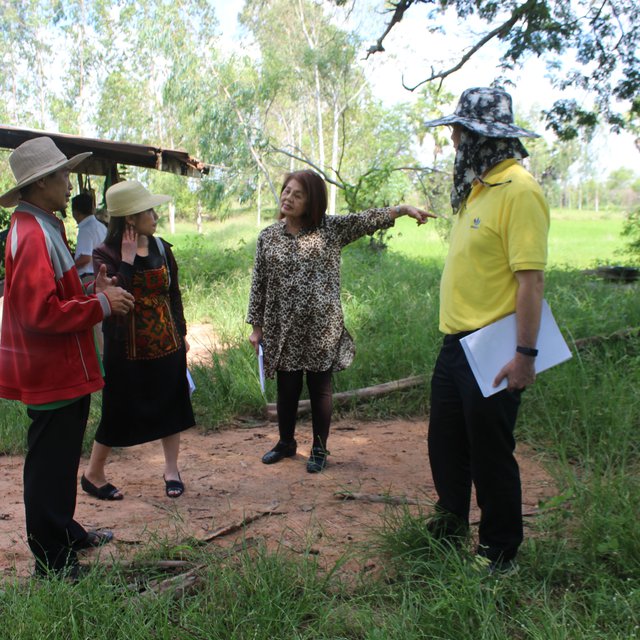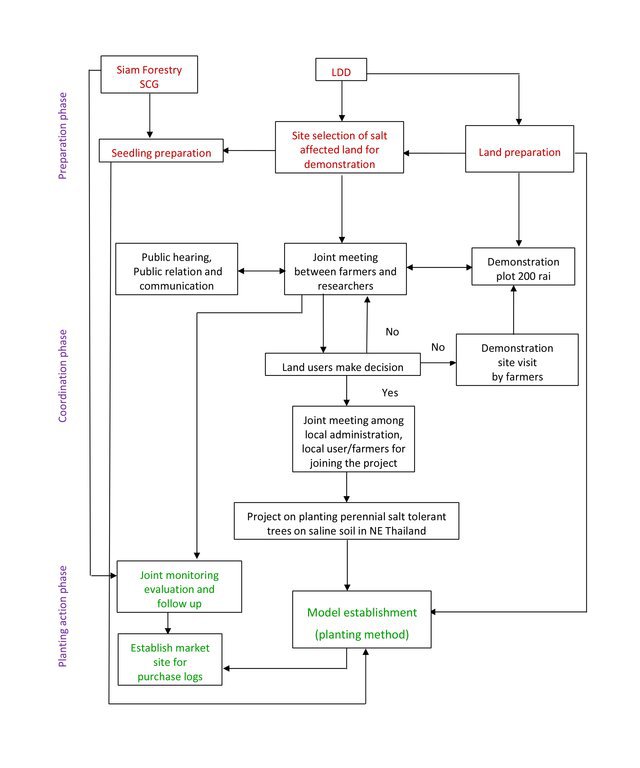



The Ministry of Agriculture and Cooperatives through the Land Development Department (LDD) has initiated a project on planting salt-tolerant perennial trees on salt-affected land in the Northeast of Thailand. Thus, this project, which began in 1996 facilitated planting Eucalyptus camaldulensis on rice bunds. The main objective of the approach is to encourage and support the land users to plant Eucalyptus camaldulensis on rice bunds in salt-affected land with shallow saline groundwater. The target of planting is 1,000 rai/yr (1 ha = 6.25 rai).
The activities started with public meetings under the local administration, identifying salt-affected areas by SLM specialists and preparing soil salinity maps; establishing demonstration plots by SLM specialists and farmers, on farmers' land, as learning centers and communicating. The local administration called farmers’ meetings to prepare detailed work plans and discussion of strengths, weaknesses, opportunities, and threats of planting eucalyptus. The methods used were questionnaires and interviewing the stakeholders for their willingness to take part and cooperate with LDD SLM specialists, researchers, and experts. The LDD has provided funding for land preparation and planting cost while corporates such as Siam Forestry Co., Ltd. purchase eucalyptus poles through a contract. The Bank for Agriculture and Agricultural Cooperatives provides loans to land users.
There are three phases: the preparation phase which was seedling preparation, site selection for establishment of a demonstration plot, rice bund preparation, and establishing a demonstration plot of 200 rai at Ban Kham Riang, Muang Pia Sub-district, Banphai District, Khon Kaen Province. The coordination phase included joint meetings between farmers and researchers, joint monitoring, evaluation and follow-up with land users, and site visits to the demonstration plot. Then planting and tree establishment on farmers’ land in the salt-affected area – those farmers who were convinced by the results of the demonstration plots, Those farmers were then supported by the project on Planting Salt-Tolerant Perennial Trees on Saline Soils in the Northeast of Thailand. A market was established for the purchase of logs. There was joint monitoring & evaluation and follow up.
Results from interviews show that land users favor this project and the spread of eucalyptus planting by themselves - due to the perceived decrease in salination as well as higher income from better rice production, plus additional income from selling poles. However, there are some negative effects of fallen eucalyptus leaves (some farmers believe eucalyptus produces organic compounds detrimental to rice yield through “allelopathy”) and there was shading of the rice crop. But in some site visits there were no effects found. Furthermore, the favorable microclimate is cooler, local earth worms which used to be absent now returning, resulting in better soil properties. However, more birds and rats dwelling in this better environment became a disadvantage because they damaged the rice yield. Nevertheless, as there are more advantages than disadvantages, farmers still adopt this technology. It has been found that more than 10,000 rai (1,600 ha) with shallow saline groundwater of the salt-affected land were planted with eucalyptus trees on rice bunds in the low-lying salt-affected discharge area.

Localização: Ban Phai, Khon Kaen, Tailândia
Data de início: 2009
Ano de término: n.a.
Tipo de abordagem

| Que partes interessadas/órgãos de implementação estavam envolvidos na abordagem? | Especifique as partes interessadas | Descreva o papel das partes interessadas |
| Usuários de terra/comunidades locais | Farmers under the project | Planting eucalyptus |
| Organizações comunitárias | Local government (Sub-district Administration Organization) | Call for meeting |
| Especialistas em GST/ consultor agrícola | Land Development Department | Site selection |
| Pesquisadores | Land Development Department | Provide technical recommendation |
| Setor privado | Siam Forestry Co., Ltd. | Purchase logs |
| Governo nacional (planejadores, responsáveis pelas decisões) | Land Development Department | Funding, planner, decision-makers |
Process of participating technology development of 3 phases including preparation, coordination and planting action.

As decisões foram tomadas por
As decisões foram tomadas com base em
Reclamation and prevention for salt-affected land with available technology and increased income for farmers.
The Soil Salinity Research Group, LDD, conducted research on saline groundwater flow path along the landscape in Northeast Thailand with Prof.Dr. Adrian Peck from University of Western Australia, supported by Australian Centre for International Agricultural Research (ACIAR) and another project with Dr. Nico Marcar from Commonwealth Scientific and Industrial Research Organisation (CSIRO) on screening for salt-tolerant trees.
Rice bund widening as establishment labour cost subsidized by LDD while planting and maintenance costs born by land users.
Free seedlings
A mão-de-obra dos usuários da terra foi
1. The policy of Siam Forestry Co., Ltd. to expand the planting area as a source of raw materials for industry and the company organizes a market in the area. 2. This technology encourages farmers to easily access their capital sources such as Bank for Agriculture and Agricultural Cooperatives, while the LDD will send the work plan and names of participating land users to the bank.
Strengthening relationship between local government administration and land users.
Establish learning center for information to farmers for technology adoption.
Farmers well adopted the technology, resulting in expansion of the areas for such technology.
Land users access to the bank loan supported by LDD project work plan as well as the names of the land users presented to the bank.
Farmers have adapted and changed SLM model to suit their own preference.
There are many other technologies that reduce salinity carried out by LDD.
Increased rice yield due to the decrease of soil salinity, resulting in farmers getting higher incomes.
Siam Forestry Co., Ltd. establishes market in the area for the purchase of the product.
Farmers have a better understanding and positive attitude of planting eucalyptus, since they obtain additional income from selling eucalyptus logs.